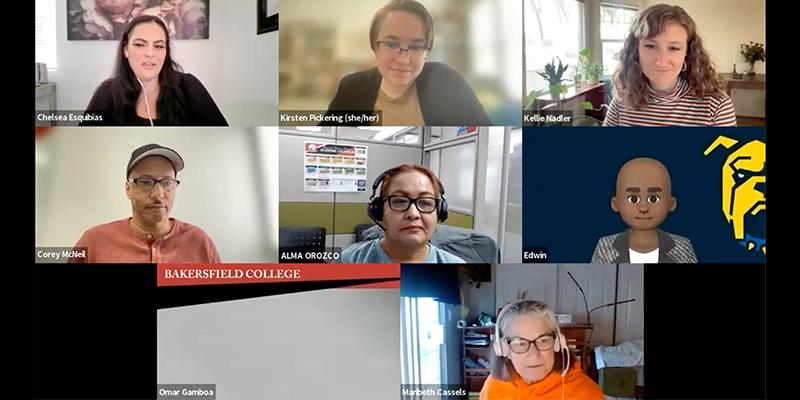Published in the November 2019 newsletter, which you can read in its entirety here.
One of the most remarkable aspects of San Quentin as a community is the way it has evolved over time as a meeting ground for people from diverse social, cultural, and economic backgrounds. To some extent this is probably typical of prisons generally; yet located as it is in the California Bay Area, San Quentin has become one of the most dramatic examples of its kind. In a demographic sense, it is precisely what colleges should be like, but rarely are.
While educational, religious, and recovery programs have long been central to the intellectual and social life of the prison, in recent years, a much broader range of programs has emerged, including ones that focus on media, political advocacy, and the arts. Many have been initiated and/or are co-facilitated by incarcerated people, rather than by outside individuals or groups only.
By hosting visits, organizing events, and launching every manner of collaborative effort, those programs have become the vehicle through which the community of San Quentin engages with the outside world, and the way the outside world can engage with the world inside the prison. This includes academics, journalists, policymakers, advocates, philanthropists, filmmakers, attorneys, researchers, judges, business people, finance professionals, elected officials, tech industry professionals, law enforcement, and others who are interested in learning from and with people inside.
In any rigorous college setting, students are always discovering new forms of knowledge, different perspectives, and new social conventions. This type of deep learning not only alters one’s relationship to the world at large; it often shapes one’s very sense of identity, one’s notion of community, even one’s life path. But at San Quentin, those who are engaged in such transformative learning include not just students, but the entire community. Even a single visit can prompt a life-changing shift in perspective. And those profound experiences are then carried back to friends, families and colleagues, thus expanding that transformational circle even further.
As teachers and students learn together, and get to know each other, they also establish social bonds, including a sense of mutual appreciation and trust. Those relationships serve a critical function in all teachers’ capacity to support their students’ intellectual and professional development. But in the prison context, those relationships also create bridges between their often radically different worlds – they shed light, lend legitimacy, generate good will, and forge a sense of commitment and responsibility.
All of this teaching, learning, and relationship-building has created the foundation upon which world-changing work being done at and around San Quentin is built. The prison has become the epicenter of an ever-growing social network that now serves, among other things, to support people who are leaving the prison—by connecting them to a larger supportive community of friends and mentors, as well as employment opportunities, housing, and other critical resources.
But that network is not just providing vital support to individuals; it is also advancing an array of cultural, educational, and political initiatives, both large and small, many of which are transforming the criminal justice system and creating a better-informed, healthier world.
The forms this transformation takes are varied: An English instructor and a student at San Quentin team up to co-create a high school course on criminal justice reform. At a roundtable discussion with a group of visiting legislators (hosted by the San Quentin News), a student shares about the impact of medical co-pays in prison; one of those legislators later helps to change those rules for the entire system. Inspired by a lecture (by Bryan Stevenson) at San Quentin, a student founds an organization through which incarcerated and non-incarcerated people use art to transform public attitudes about mass incarceration (Prison Renaissance). District attorneys attending an event at San Quentin hear about a student’s proposal to create a process through which DAs and CDCR administrators can recommend people for early release, and later help put it into practice. Media projects produced by or with people at San Quentin (via the San Quentin News, San Quentin Radio/KALW, Firstwatch, Ear Hustle) are heard by tens of thousands of people every week, all over the world. This essay was written with extensive feedback from a student! The list is endless.
None of this is to say that the internal workings of such collaborations are not fraught with all manner of complex challenges—above all, the unequal distribution of power, access to resources, and social legitimacy—all of these reflect the gross inequalities of both the prison environment and the society as a whole. But this is precisely what makes the work so extraordinary. It is strange to imagine that a prison of all places might model the promise of the university, but in many respects, this is exactly what is happening.
In spite of unimaginable obstacles, this community forges ahead—pooling its collective social, cultural and economic capital, its creativity, compassion, and sheer determination—to support the wellbeing of its members, serve the public good, and transform the society as a whole.
Please note that the Prison University Project became Mount Tamalpais College in September 2020.












